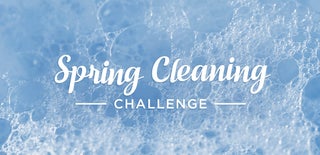Introduction: DIY Upcycled Face Mask
Hospitals are in dire need of personal protective equipment, including N95 face masks. These cloth masks are only 40-60% as effective according to various research, however they are better than nothing. I encourage others to use this pattern, or others linked below, out of materials you have at home to make masks and try to find ways to donate them to hospitals. Do not use this mask if you are having respiratory problems, as some of the research indicates the cloth can exacerbate breathing issues. This mask design is intended to replace the N95 once all reserves are depleted. There are other designs out there serve as looser, washable covers for N95 masks to extend the life of the ones healthcare providers have access to. This is a good one for N95 washable cover. Some designs incorporate HEPA filters or water proof outers, but those materials are not as accessible and can be harder to breathe in leading to less use. See the last page for additional resources.
- UPDATE - March 22 AM: Many hospitals are asking for sewn masks and local fabric stores and Joann chains are both providing materials and collecting sewn masks to distribute to hospitals. https://www.joann.com/make-to-give-response/?icn=h...
- UPDATE - March 20 PM: "Based on particle capture and breathability, the researchers concluded that cotton t-shirts and pillow cases are the best choices for DIY masks." Also, layering doesn't do much to add protection and makes the mask less breathable, so I am cutting out the extra layers and making additional masks with them.
- UPDATE - March 20 AM: A healthcare provider recommended that strings are better than elastic or other over-the-ear options as they can be fastened tighter. Please see additional images.
Supplies
Material: Cotton Blend T-shirt (this is why I have been saving all those shirts!)
Nose Bridge: Aluminum Foil, thin crafting wire, paperclips, or twist ties
Strings/Ear Loops: Elastic, this strips of fabric (such as , string, shoelaces, etc.
Equipment: Sewing machine, scissors (needle and thread if that is what you have!)
Step 1: Print and Prep
- Print the attached 8.5x11 template.
- Cut along solid lines for desired size (medium fit most). When you are done cutting unfold the 2 layers and it should look like a butterfly.
- Cut 12"x4.5" aluminum foil, fold in half several times, then roll it to be about 1/4" wide and 4.5" long.
- Fold the shirt twice length-wise and pin the pattern aligned with the main folded edge. Depending on your scissors you may have to cut some of these layers separately, as there should be 8 layers of fabric.
- Cut 4 thin strips of fabric, ideally the hem of a shirt in approximately 12" lengths for tie method (preferred). OR Cut two lengths of elastic 9" long for over-the-ear method.
Attachments
Step 2: Sew Mask
- Split the layers in two piles, two layers think. Pin and, leaving 1/4" margins, sew the two straight lengths for each of the sets.
- Stack the two cups inside one another, seams out. Sew around the edges of all four layers leaving a 1-2" gap.
- Pull the right side of the mask out through the gap and all the seams should be inside.
- Insert the aluminum bridge and place at the very top of the mask, perpendicular to the top seam. Sew through all four layers around the aluminum to keep it in place.
- Sew all the way around the outside edge, flattening the seam and closing the gap.
- Poke holes through the pattern to mark where the elastic should be sewn and mark on both halves of the mask.
- Sew the straps or elastic on with a firm zig-zag stitch.
- You may consider tieing fisherman knots with the straps: https://www.netknots.com/rope_knots/fishermans-knot?fbclid=IwAR0MG3yIzdllms1QUHgW0vEz54R7E-FOzOLY2BIrUe8Z8aVn51aask2uklw
Step 3: Prep for Donation, Sources, and Other Mask Designs
Again, I strongly encourage people to find out if hospitals will accept cloth masks. If so, you should not have any symptoms of COVID-19, clean all of the masks in hot water, and remove from dryer directly into an unused plastic bag. Folks in Massachusetts are working on a process for this, so hopefully there will be procedural updates soon. Consider reaching out to folks at local health centers and even making donations to grocery store staff.
I am not a health professional and encourage people to leave comments with suggestions and questions.
Here is another Instructable for face masks that require a few different supplies:
This is a good one for N95 washable cover: https://www.instructables.com/id/AB-Mask-for-a-Nu...
https://www.instructables.com/id/Face-Mask-With-N9...
https://www.instructables.com/id/DIY-Cloth-Face-Ma...
This is a good one for N95 washable cover: https://www.instructables.com/id/AB-Mask-for-a-Nur...
https://diymask.site/?fbclid=IwAR20Uqmehr-6t3Ia4xx...
https://freesewing.org/blog/facemask-frenzy/
Research
https://smartairfilters.com/en/blog/best-materials...
https://www.instructables.com/id/DIY-Cloth-Face-Ma...

Participated in the
Spring Cleaning Challenge














